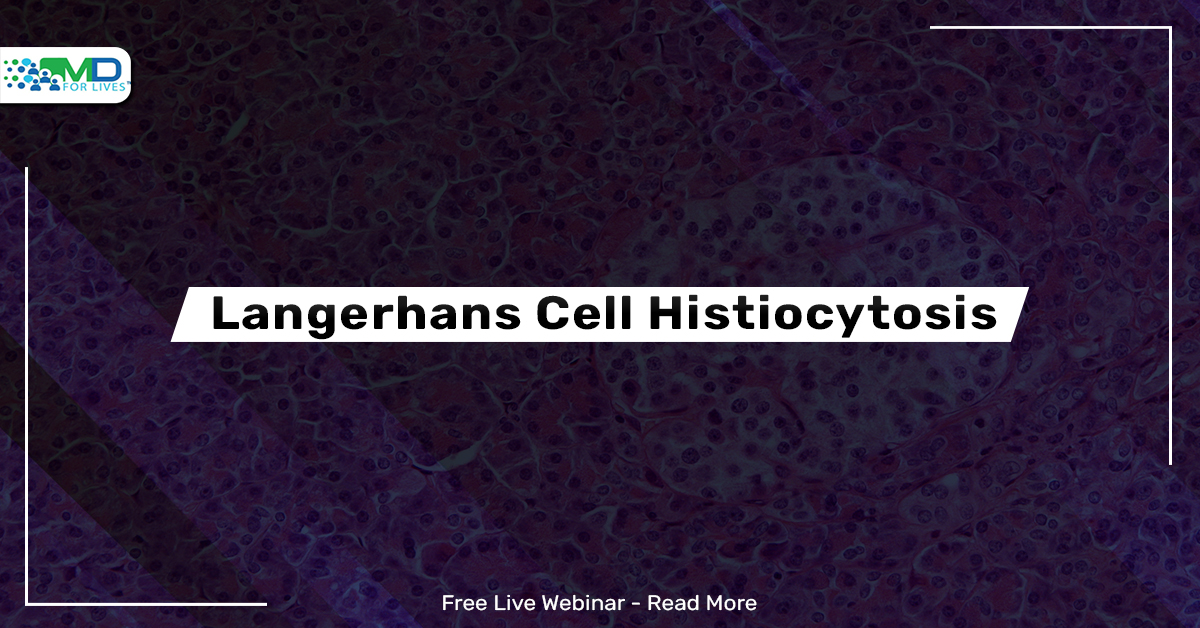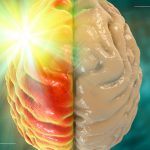Langerhans cell histiocytosis (LCH) is an uncommon condition that causes tissue damage and lesions in one or more parts of the body. LCH starts in the cells of the Langerhans gland. LCH cells are a type of dendritic cell that helps the body fight infection in the regular course of things. It is unclear whether LCH is cancer or a cancer-like condition.

Causes of Langerhans cell histiocytosis
In the Langerhans cells of around half of people with LCH, somatic mutations in the BRAF gene have been discovered. The BRAF gene codes for a protein that is routinely switched on and off in response to signals that regulate cell growth and development. Even in the absence of chemical signals, somatic mutations cause the BRAF protein in afflicted cells to remain active and relay messages to the nucleus. By allowing Langerhans cells to proliferate and divide uncontrolled, the hyperactive protein may contribute to the development of Langerhans cell histiocytosis.
Viral infections and environmental pollutants may also potentially play a role in the progression of this condition.
Prevalence
Langerhans cell histiocytosis (LCH) is a rather uncommon condition. The annual incidence is predicted to be between 0.5 and 5.4 cases per million people with males slightly more affected than females. During the fall and winter seasons, LCH was identified more frequently than during the spring and summer seasons.
Stages
Langerhans cell histiocytosis does not have a recognized staging scheme. LCH is classified as either a single-system or a multisystem condition.
- Single-system LCH is found in one portion of an organ or a body system or in more than one part of an organ or a body system. The most common location is the bone.
- Multisystem LCH can be discovered in two or more organs or body systems, or it might be found all across the body.
LCH can affect either low-risk or high-risk organs:
- Low-risk organs: Central nervous system, thymus, skin, bone, lungs, lymph nodes, thyroid gland, gastrointestinal tract, and pituitary gland.
- High-risk organs: Liver, bone marrow, and spleen.
Progressive, refractory, or recurrent LCH:
- Progressive LCH continues to grow, spread, or deteriorate.
- Refractory LCH is refractory to therapy.
- Recurrent LCH returns after treatment
RAF/MEK/extracellular signal-related kinase pathway
Langerhans cell histiocytosis is characterized by granulomatous lesions containing pathological CD207+ dendritic cells (DCs) with constitutively activated mitogen-activated protein kinase (MAPK) pathway signaling. Around 60% of LCH patients have somatic BRAFV600E mutations that are found in CD207+ DCs within lesions.
A study by Hogstad Brandon et al., 2018, showed that RAFV600E-induced extracellular signal-related kinase activity inhibits C-C motif chemokine receptor 7 (CCR7)-mediated DC migration, trapping DCs in tissue lesions. BRAFV600E causes an increase in the production of BCL2-like protein 1 (BCL2L1) in DCs, leading to apoptosis resistance. In a mouse LCH model and primary human LCH cells, pharmacological MAPK inhibition restores migratory and apoptotic capacity. MEK inhibitor-loaded nanoparticles can concentrate drug delivery to phagocytic cells, reducing off-target toxicity considerably. MAPK inhibits DC migration and increases DC survivability, trapping DCs in LCH lesions and making them resistant to cell death.
Signs and symptoms
LCH has different indications and symptoms depending on where it is located in the body.
- In bones, swelling or a lump accompanied by pain.
- In the skin and nails, scalp flaking that may resemble “cradle cap”, flaking in the body’s wrinkles, fingernails that are falling out or have grooves that are darkened, on the scalp, there are bumps or ulcers, etc.
- In the mouth, swollen gums, sores on the inside of the mouth’s roof, and teeth that have turned crooked or have fallen out.
- In the lymph nodes or thymus, swollen lymph nodes and coughing, difficulty breathing, and swelling of the face, neck, and upper arms.
- In the eye, vision problems or blindness.
- In the bone marrow, bruising or bleeding that is easy to come by, fever, and infections.
- In the lung, collapsed lung, chest pain, dry cough, etc.
- In the liver and spleen, bloody stools, diarrhea, swelling in the abdomen, etc.
- In the brain and spinal cord, trouble speaking and seeing, memory problems, headaches, etc.
- In the endocrine system, diabetes insipidus, slow growth, swollen thyroid gland, overweight, hypothyroidism, etc.

Diagnosis
Some of the procedures used to diagnose Langerhans cell histiocytosis (LCH) are as follows:
- Bronchoscopy with biopsy,
- X-ray,
- Skin biopsy,
- Bone marrow biopsy,
- Complete blood count,
- Skeletal X-ray survey,
- Pulmonary function tests
- Liver function tests
- MRI and CT scans of the head for hypothalamic and pituitary gland abnormalities.
- A fluorodeoxyglucose (FDG) positron-emission tomography (PET) scan for bone lesions.

Treatment
Treatment for Langerhans cell histiocytosis varies from patient to patient and is determined by the kind and severity of the ailment as well as the affected body part(s).
- Radiation therapy
- Chemotherapy
- Stem cell transplant
- Targeted therapy
- Surgery
- Photodynamic therapy

Long-term follow-up care is frequently required for patients with LCH in order to discover the late consequences of the disease or treatment.
There is no unanimity on the optimum treatment for LCH, particularly when multiple organs are implicated. The Histiocyte Society, on the other hand, has conducted numerous clinical trials to assess the effectiveness of various treatments, which have resulted in recommendations from the Histiocyte Society.
With the knowledge of clinical experience in LCH, physicians will be able to design high-quality patient safety and quality improvement studies in their own practices in the future and provide the best patient care with the latest knowledge.
Join the expert webinar on “Langerhans cell histiocytosis” on February 3rd, 2022, 09 00 MST, with Dr. Michael Henry, hemato-oncologist, to get exclusive insights into the clinical studies to better understand, prevent, and treat the disease
You will learn:
- The initial recognition of LCH as a distinct pathologic entity
- The most recent clinical research highlighting diagnostic and treatment options
- Cell-signaling processes in LCH and associated targeted therapy
- https://www.cancer.gov/types/langerhans/patient/langerhans-treatment-pdq#:~:text=and%20treatment%20options.-,Langerhans%20cell%20histiocytosis%20is%20a%20rare%20disorder%20that%20can%20damage,helps%20the%20body%20fight%20infection.
- https://medlineplus.gov/genetics/condition/langerhans-cell-histiocytosis/#causes
- https://rarediseases.info.nih.gov/diseases/6858/langerhans-cell-histiocytosis#:~:text=Testing%20for%20Langerhans%20cell%20histiocytosis,evaluate%20possible%20abnormalities%20of%20the
- https://www.cancer.gov/types/langerhans/patient/langerhans-treatment-pdq
- https://www.ncbi.nlm.nih.gov/pmc/articles/PMC5748846/






